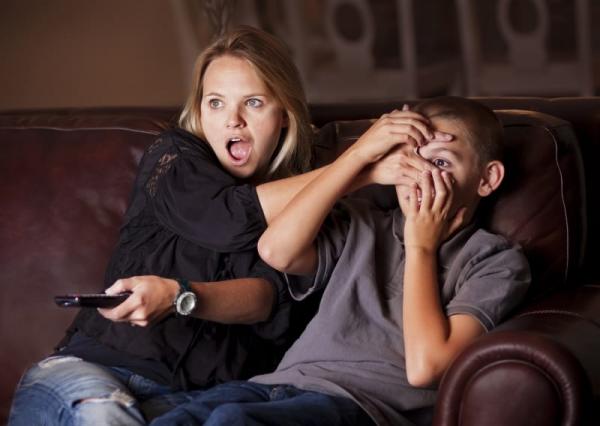
Pornography seems to play a large role in today's society. In varying levels, it is on the covers and in the contents of magazines, on TV, in movies, found in suggestive song lyrics and in literature. It is at the fingertips of our families - even our children - with the wide use of the Internet and smartphones. It is such a prevalent part of our society, but yet has the ability to destroy lives and families. There are ways to protect your children from this vicious entity using technology, common sense and, most importantly, talking with your children about pornography.
Have deliberate and blunt conversations with your children about pornography
Avoiding the subject is not a means of protecting your children. Just as we talk to our kids about "stranger danger," we need to teach them about the dangers of pornography. The Utah Coalition Against Pornography (UCAP) suggests expressing your concerns about pornography to your children and having open discussions about it. Bring it up. Talk about it. It may be awkward at first, but it is necessary. Open the discussion saying that sometimes kids see it accidentally and ask if they've seen it before. Make sure they feel safe talking to you, and that you're not going to be angry with them if they have seen it.
Share your own experiences
To make it easier to discuss, UCAP explains that by telling your kids about your own experiences with seeing pornography may be helpful. Tell them how it made you feel and what you did after you saw it. Explain what you would have done differently, and let them ask questions.
Encourage your children to be upfront
If they have seen pornography or see it sometime in the future, your children need to be able to talk to you about it. Praise them for coming to talk to you about it. UCAP suggest a "Ten-Minute Rule" which means that they should come talk to you within 10 minutes of seeing pornography.
Keep computers and other devices in a central place in the home
Inappropriate online conduct is less likely to happen out in the open than in private. Monitor computer, smartphone, tablet or other electronic devices frequently. Make sure every person in your family understands appropriate online behavior, what is OK and what is not and what to do if they see pornography accidentally (come talk to you about it).
Establish rules for Internet or phone use
With Facebook, Twitter, text messages and image use rampant with youths, we have to be responsible to monitor and teach our children to be safe. These, and other modes of communication, are not monitored by the entities themselves but is left to the discretion of the users. Sending or receiving explicit text messages or images, viewing them online or scrolling through apps are just some of the ways your child can be exposed to this dangerous "new drug." But, what starts out as an innocent accident can turn into a horrible addiction if not properly handled.
There are inherent risks associated with pornography
Information adapted from "The Porn Trap: The Essential Guide to Overcoming Problems Caused by Pornography" states several hazards of porn. Risks include "social isolation, mood disorders, sexually objectifying other people, engaging in risky and dangerous behavior, self-loathing, neglecting important areas of life and addiction to porn." It is important for parents and children to understand that these problems can arise from viewing pornographic images or other forms of pornography (written word, lyrics, etc.)
Some helpful sites for Internet safety and pornography resources
fightthenewdrug.org
utahcoalition.org
internet-safety.yoursphere.com
familyshare.com/how-to-use-a-family-media-pledge-to-teach-internet-safety
Sites for parental control tools
www.netnanny.com
pandorashope.com
Internet tools for kid-friendly Web surfing
www.kidzui.com
www.factmonster.com
www.surfnetkids.com
As parents, we cannot rely on the media, government or others to protect our kids from pornography. It is our responsibility to educate them on the pitfalls of pornography and to do what we can to steer them in the right direction. Talking about it, setting up kid-friendly computer and cell phone usage rules and safety nets are a good place to start.

